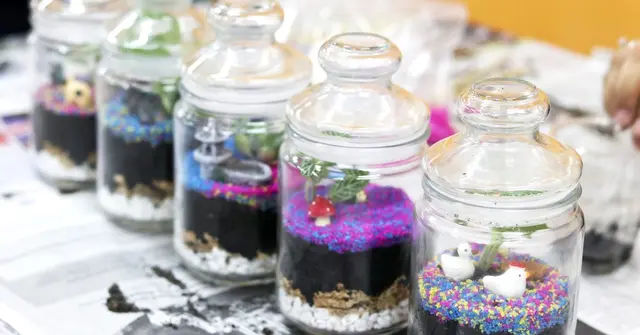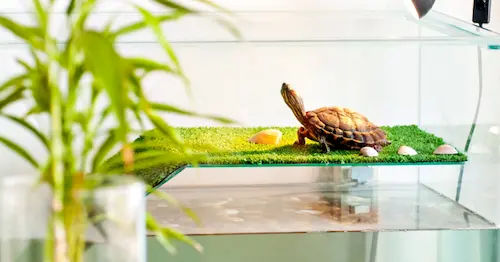Terrarium

A terrarium is a type of container garden that is made up of plants and soil. It can be either open or closed. Terrarium Singapore is becoming increasingly popular, and there are many different types to choose from! In this blog post, we will discuss 14 popular types of terrariums and instructions on how to recognise each one. So whether you are a beginner or an expert, you can still learn more about different types of terrarium and get ready to create your own version using terrarium diy kit Singapore!
Aquaterrarium

Aquaterrarium is a hermaphroditic environment that combines both aquatic and terrestrial features. Aquaterrariums gained popularity when some biologists or collectors built them to house turtles and crocodiles that may live on land as well as in water. Aquaterrarium is divided into three types based on the ratio of water and substance: Paludarium, Riparium, Rivarium.
Paludarium

It’s also known as a semi-terrestrial lake. The name is derived from the Latin word palus, which means “swarm.” It is a region with little water and a variety of semi-terrestrial plants. This may include amphibians and insects.
Riparium

The word riparium comes from the Latin term ripa, which means “riverbank.” A riparium is a river bank replica. It is defined by a high percentage of water (usually over 50%) as well as dense vegetation or trees.
Rivarium

Rivarium is a term used to describe the typically smooth and flowing appearance of water. It may also be translated as “riverine.” The Latin rivus refers to both a river or stream. The main setting of Rivarium is based on a river and stream section with numerous boulders and a minimal water level (less than 50%). Typical crops include semi-terrestrial, terrestrial, and aquatic plants. Rivarium may include aquatic animals as well.
Rainforest Terrarium

Simulate the tropical rainforest’s plant and animal life. It is a closed environment that requires high humidity and should be ventilated to prevent mold or mildew.
Forest Terrarium

This is a type of Terrarium that replicates a forest environment or a portion thereof. It’s a midway point between a dry terrarium and a rainforest terrarium.
Desert Terrarium

Desert terrarium is a type of Dryterrarium that includes a dry environment, with a deep layer of sand or clay – sand as the substrate. Vegetation in a desert terrarium is often restricted, and it’s generally drought tolerant, such as cacti, succulents, succulents, or CAM plants.
Steppeterrarium

A Steppeterrarium is also a kind of Dryterrarium. A tepui terrarium is created from the same basic materials as a desert and savanna terrariums.
Savanna Terrarium

The savannaterrarium is a style of Dryterrarium that recreates a grassland environment. The terrarium contains shrubs, rocks, and trees. It may include little thorny bush plants.
Rock Terrarium

The fourth stage of Dryterrarium is this one, which is rocky, terraced, and sometimes less vegetated.
Formicarium

The terrarium shape replicates the ants’ natural environment.
Insectarium

The Insectarium is a terrarium that imitates an insect’s natural environment. Insectariums are frequently found in museums, and the subject of insects is referred to as “insectology.” Not many people make indoor Insectarium tanks, however insect enthusiasts do.
Penguinarium

Simulations of the polar regions’ chilly climate, with penguins, white bears, and fish as the main characters…. This type of terrarium is less popular for business or zoo display.
Vivarium

Vivarium comes from the Latin term for habitat, and it is also known as an ecological box or bigger, an eco room, a glass room, and a preserved enclosure where researchers or nature enthusiasts may observe or study. Vivarium and Terrairium are both terms that mean a microenclosure that is tiny in size and disconnected from the surrounding environment. Vivarium, on the other hand, frequently employs only a limited and closed ecological setting that includes soil, air, flora, and animals. On a broad scale, vivarium is often utilized in scientific study or realistic simulation, whereas terrarium is usually used on a tiny scale such as as decoration or art exhibits.
Terrarium
Now you know some other interesting types of terrarium, you may be keen on doing one yourself. Terrarium making Singapore is gradually becomes the favourite activity but not many terrarium class Singapore are actually of high standards. If you are interested in diy terrarium Singapore, do check out The Fun Empire terrarium workshop and try making your own miniature garden!
If you enjoyed reading this, you might also like:
.webp)